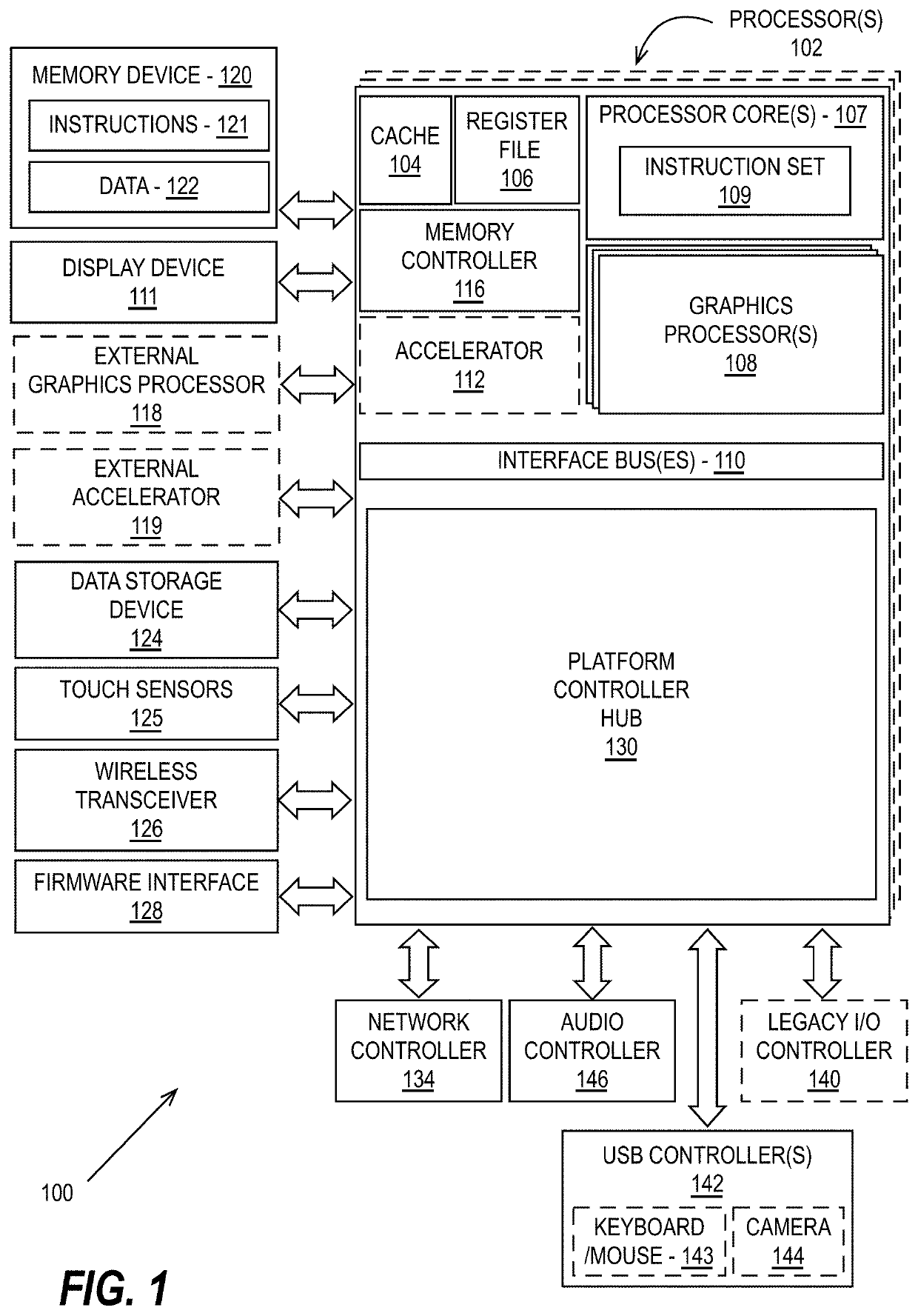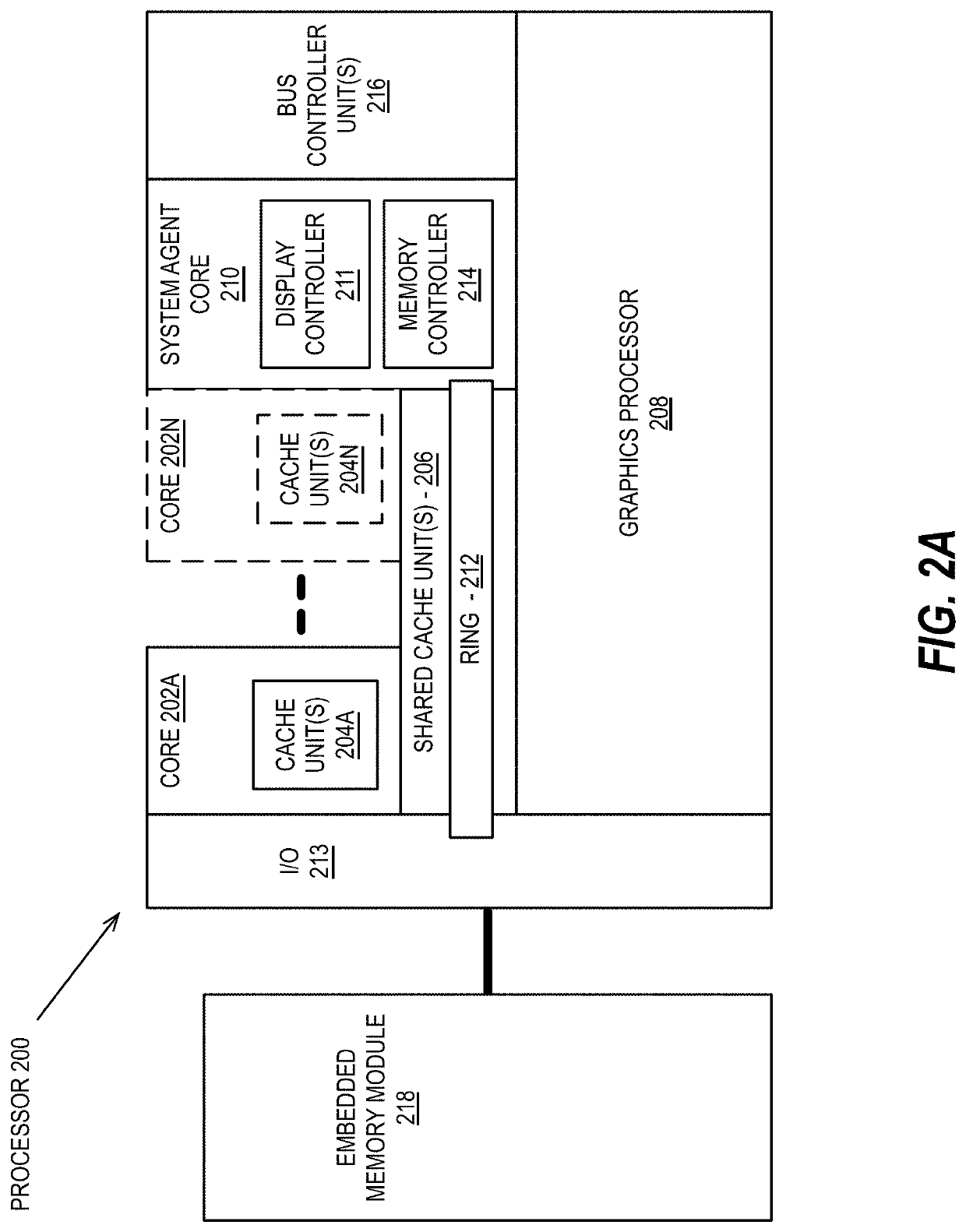Apparatus and method for compressing ray tracing acceleration structure build data
a technology of acceleration structure and build data, applied in the field of graphics processors, can solve the problems of requiring a significant amount of time on a conventional general-purpose processor, ai denoising is still a costly operation, and a large amount of computational effort in the training process
- Summary
- Abstract
- Description
- Claims
- Application Information
AI Technical Summary
Benefits of technology
Problems solved by technology
Method used
Image
Examples
example neural
Network Implementations
[0286]There are many types of neural networks; a simple type of neural network is a feedforward network. A feedforward network may be implemented as an acyclic graph in which the nodes are arranged in layers. Typically, a feedforward network topology includes an input layer and an output layer that are separated by at least one hidden layer. The hidden layer transforms input received by the input layer into a representation that is useful for generating output in the output layer. The network nodes are fully connected via edges to the nodes in adjacent layers, but there are no edges between nodes within each layer. Data received at the nodes of an input layer of a feedforward network are propagated (i.e., “fed forward”) to the nodes of the output layer via an activation function that calculates the states of the nodes of each successive layer in the network based on coefficients (“weights”) respectively associated with each of the edges connecting the layers. ...
examples
[0665]The following are example implementations of different embodiments of the invention.
[0666]Example 1. An apparatus comprising: traversal hardware logic to traverse rays through a graphics scene comprising a plurality of primitives; and an acceleration data structure processing unit comprising: a bounding box compressor to compress a set of bounding boxes to generate a plurality of bounding box compression blocks, an index compressor to compress a set of indices to generate a plurality of index compression blocks, and an acceleration data structure builder to process the bounding box compression blocks and index compression blocks to generate acceleration data structures
[0667]Example 2. The apparatus of example 1 wherein the acceleration data structure comprises a bounding volume hierarchy (BVH) to be used by the traversal hardware logic to traverse the rays through the graphics scene, the bounding boxes of the BVH stored as a number of axis-aligned bounding boxes (AABBs) compri...
PUM
 Login to View More
Login to View More Abstract
Description
Claims
Application Information
 Login to View More
Login to View More - R&D
- Intellectual Property
- Life Sciences
- Materials
- Tech Scout
- Unparalleled Data Quality
- Higher Quality Content
- 60% Fewer Hallucinations
Browse by: Latest US Patents, China's latest patents, Technical Efficacy Thesaurus, Application Domain, Technology Topic, Popular Technical Reports.
© 2025 PatSnap. All rights reserved.Legal|Privacy policy|Modern Slavery Act Transparency Statement|Sitemap|About US| Contact US: help@patsnap.com



